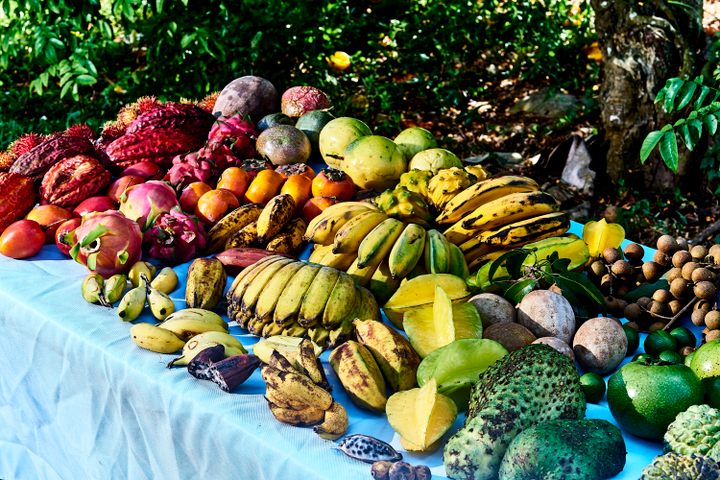

How the Tip of Florida Became a Tropical-Fruit Paradise
Far-flung produce found a home thanks to Homestead’s unique climate.
The Tropical Research and Education Center in Homestead, Florida—or TREC, as it’s known to local farmers—is nearly as far south and east as you can go in the United States before you hit salt water. Perched on a narrow strip of land between the peat marsh of the Everglades and the mangrove forest of Biscayne Bay, it’s just two degrees north of the Tropic of Cancer. Hot, sticky, and almost comically humid nine months of the year, the little toe of the Sunshine State is the only part of the contiguous United States with a tropical monsoon climate.
Geographically speaking, TREC is in the Caribbean Basin. Which is how this 160-acre offshoot of the University of Florida’s Institute of Food and Agricultural Sciences came to have one of the most impressive collections of tropical fruit in the country.
“Coming up is our white sapote,” says Jonathan Crane, TREC’s assistant director and a tropical fruit specialist with the university, as he points out to his orchards with more than a touch of fatherly pride. To celebrate the center’s 90th birthday, Crane is giving public tours from a covered metal wagon pulled by a pickup truck. We glide by mature avocado trees big enough to shade a house, their roots carpeted with crabgrass. We peer up at old Caribbean akees whose black-eyed ripe fruits hang open like little Chinese lanterns from branches now several stories high.
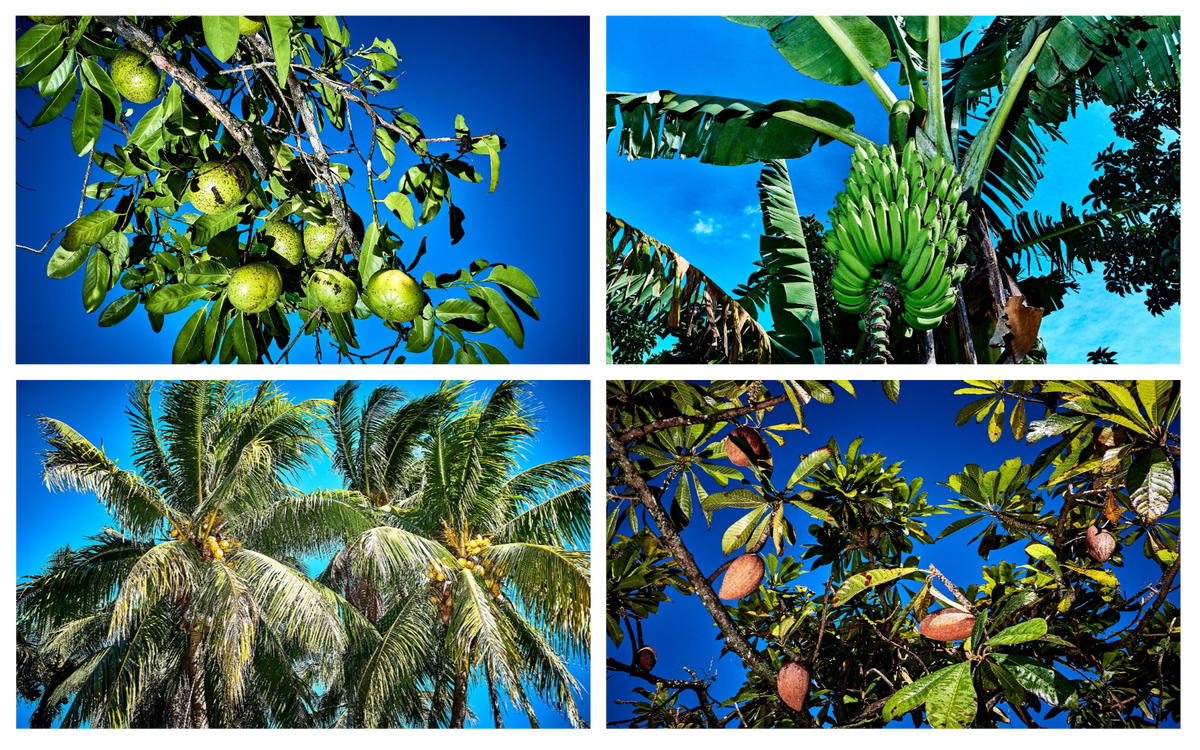

We pass by the nearly century-old tamarinds loaded with sour-sweet pods, and then a row of loquats, their leafy branches bouncing in a perfectly warm winter breeze. As we roll along, Crane points out the atemoya, with its dinosaur-like scales, and the sweet custard of the ripe green sapote. He pauses, taking in his audience, mainly South Florida farmers and those who work with them: “But I’m not telling you anything you don’t know.”
Crane is right: Many of the riders on this trolley already grow these fruits, or live next door to those who do. Driving from Miami to TREC, which is sandwiched between the new condominiums and century-old farmland that share the 70,000-person city of Homestead, I passed fences lined with passionfruit vine, hand-painted signs hawking home-grown avocados, and the county-run Fruit and Spice Park, where visitors are encouraged to try the orange flesh of the Latin American canistel or get lost in an heirloom banana grove. It’s hard to believe you’re only an hour south from the neon-lit main drag of Miami Beach.
Or, maybe more accurately, it’s hard to believe you’re in the United States.

Unlike in most other agricultural regions of this country, nobody here does commodity soybeans or field corn, and only a few still grow winter vegetable crops like the tomatoes and green beans that were once sent north by the truckload each December. Homestead’s patchwork of farms, many run by people with roots in tropical regions around the world, today grow longan and lychee, jackfruit, dozens of varieties of mango and avocado, custardy mamey, crunchy starfruit, perfumed and intoxicating pink guava, little green guinep, and tiny Thai bananas, to name but a few.
All this produce makes its way to supermarkets and restaurants and smoothie blenders around the country, yes, but many are also grown specifically to give immigrants the freshest, most flavorful taste of home they can get. Produce imported from Chile or Mexico might be cheaper, but this is the only way a market in Atlanta or Boston or Chicago is going to get a passionfruit in season in just two days. If you’ve ever found firm green papayas for Thai som tum (most imported fruits are too ripe once they arrive), seen a Chinatown fruit stand with perfectly pink lychees (their colors fade as they slowly make their way through the import process), or bought still plump Pakistani mangoes (which tend to wither, if they’re not rejected outright by inspectors), Florida is likely where they came from.

These kinds of crops may not be indigenous to this landscape, but many have been cultivated here for a very long time. Mango and avocado—both planted in South Florida some 200 or more years ago—just happened to be among the few fruit crops that grew well in Homestead’s unusual limestone soil. It’s not so much soil but a thin layer of dirt atop a thick layer of rock, pinkish and shot through with prehistoric holes like coral, which it’s often mistaken for. (Though essentially nutrient-free, a thick, holey, limestone-rock barrier means a lot of this ocean-adjacent land doesn’t get too soggy, which is handy during summer monsoons or flooding from storms.)
Since the late 1800s, local farmers figured out how to work around this limestone slab, first by planting in the naturally deeper holes, then by breaking it up with pick-axes, and later, with help from places like TREC, by using more modern farm equipment and techniques that could crush it up into pieces and blend it with more nutrient-rich matter to grow almost anything.
Still, for much of the past century, Homestead farmers grew a limited number of more standard crops: winter produce, acres of limes, and supermarket-variety avocados and mangos.

According to Crane, the shift to a more diverse range of tropical fruits and vegetables began about 40 years ago. Hurricanes and diseases wiped out most citrus, while the North American Free Trade Agreement and foreign competition made growing only major-market crops less appealing, if not a total loss. But another big part of it, Crane says, “you can really trace to the ethnic diversity in Florida.”
Half of the region’s population has long been of Latin and Hispanic heritage, and 20 percent is African- and Caribbean-American. Many newcomers, says Crane, come from all over Asia. On the farm roads around TREC, farm signs hint at ties to Cuba, Mexico, Sri Lanka, Vietnam, India, and the Philippines, all owned by farmers growing what they know.
TREC, which was founded by the Florida state legislature in 1929 as the Subtropical Experiment Station, has always supported local agriculture and horticulture. Its staffers run a clinic where farmers can bring in sick or dying plants, and they help homeowners learn how to put fruit trees in their front yards. They study how plants can withstand climate change, salt water, or extreme weather.
But a big part of the job has always been figuring out Florida’s next money-making crops, which is why its researchers are growing new varieties of the sweet West Indian squash known as calabaza, overseeing a test patch of two colors of trendy Australian finger-lime, and seeing how various vanilla orchids flower under different levels of shade.
Now, Crane says, the professional mode of thinking is that the more niche you can get with what you grow, the better.
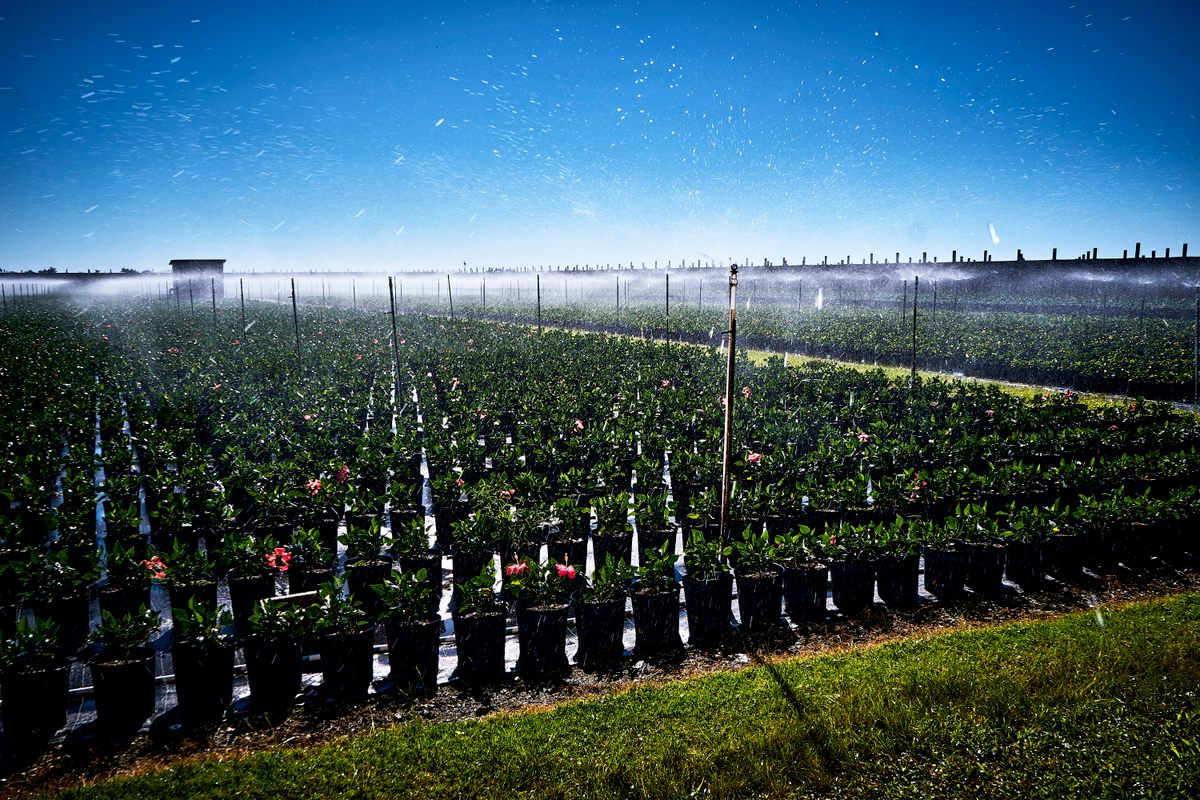
“All we have here is specialty crops, the weird stuff,” says Margie Pikarsky, whose 27-year-old organic Bee Heaven Farm is just a few blocks away from TREC. Pikarsky, who spent her childhood in nearby Cuba helping her father grow in their backyard, is describing the current fields of her fellow farmers, but she is also poking fun at how the U.S. Department of Agriculture describes this kind of produce, along with almost all fruits, vegetables, and tree nuts. “Fruits and vegetables should never be called specialty crops,” she says. “What do you eat? Do you eat soybeans?”
Pikarsky, who sells at farmers markets and through a CSA, is the real rarity in this region, in that she sells winter vegetables and tropical fruits directly to local Floridians.
While the direct-to-consumer market might become Homestead’s next frontier—perhaps led by Miami Fruit, where a couple of twenty-somethings sell all manner of locally grown tropical fruits online as they build out their own two-acre farm—most farmers still send their product north and west, just as South Florida farmers have done for a century.
In fact, says Crane, he knows of many immigrant or first-generation families that own large food markets in East Coast cities, or in Midwestern cities such as Chicago, who have set up supply lines directly to friends or family members with Homestead farms. Some even send a relative down to start one for a vertically integrated operation.
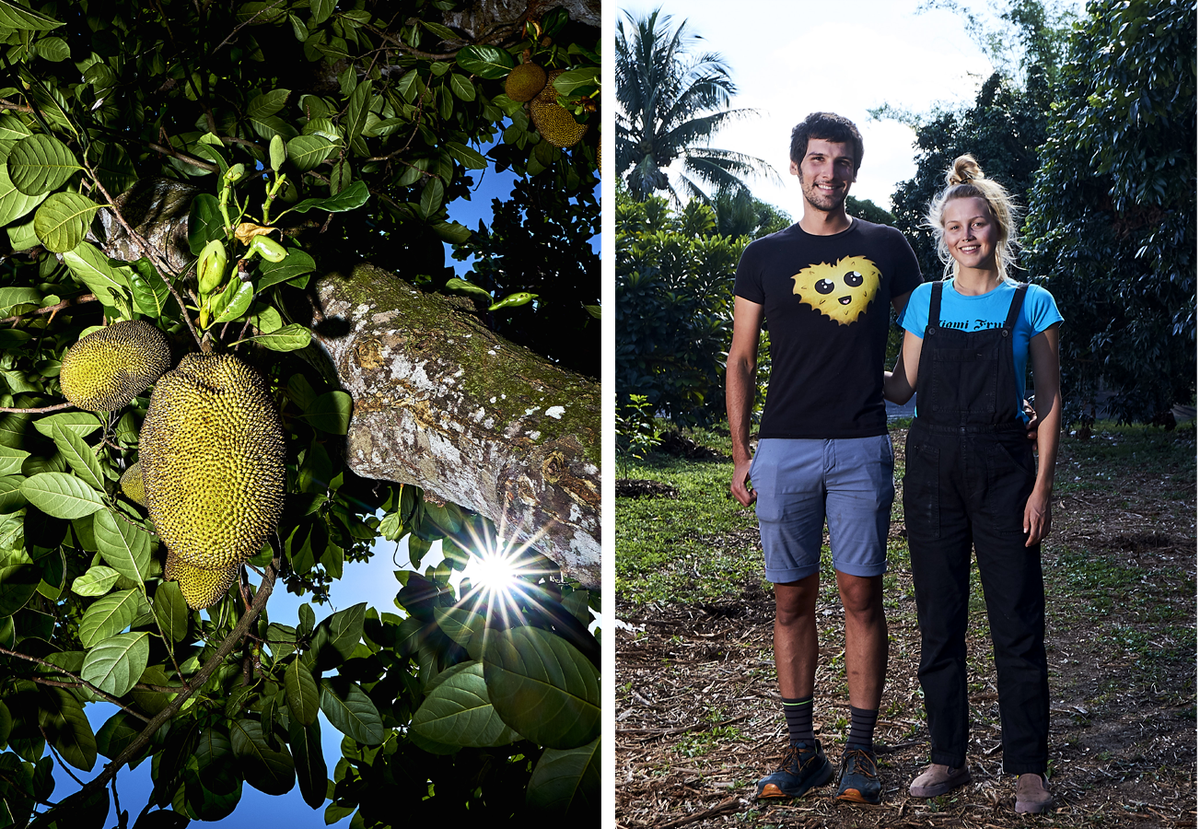
Over the years, some operations have blossomed into their own brand names, like Jalaram Produce, a family-run importer and distributor with a 580-acre headquarters in Homestead. Owner Mahendra Raolji says he sends trucks north to places such as Patel Brothers—a chain of Indian markets along the Northeast coast and around the country—filled with produce including unripe jackfruit, bitter melon, taro leaves, long beans, and the yellow-green dosakai melons used for pakora.
Many of the most diversified farms are like 15-acre Khemara Farms, where Peter Pith and his wife Shirley grow dozens of kinds of Southeast Asian fruits, including guava, jackfruit, jujube, mangosteen, papaya, pomegranate, sapodilla, and sugar apple, plus the Southeast Asian herbs and greens the Piths grew up eating. Like many immigrant-run farms in this area, even their fence-line is lush and layered, wound with the cactus-vine called pitahaya, or dragon fruit. They sell most of their produce to national distributors who consolidate it and ship it out, says Pith, although a few Southeast-Asian Americans order directly from him through Facebook.
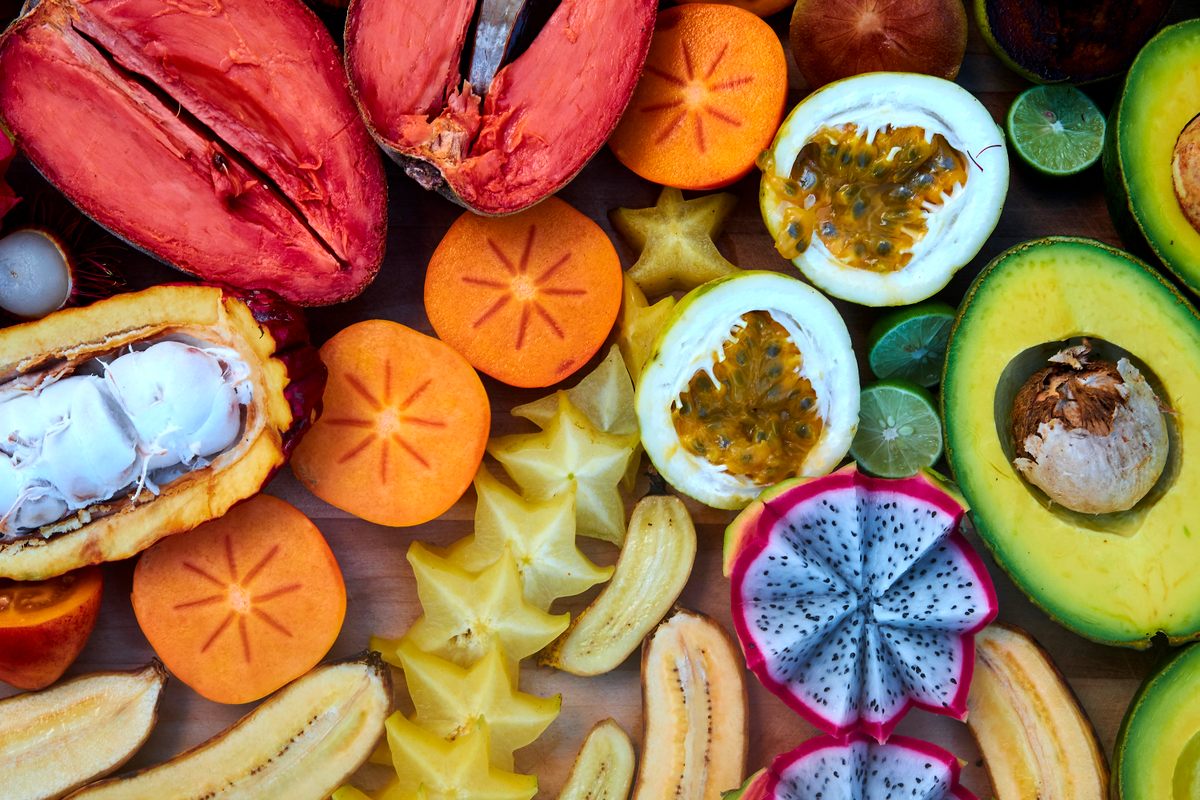
The Piths, as it happens, became Homestead fruit farmers by accident. When Peter Pith came to South Florida from Massachusetts on vacation with his family in 1986, the landscape reminded him of Cambodia and the farm he tended there with his parents. “Oh, there’s a coconut tree! And a mango tree!” he remembers thinking. “We were in a hotel for a week, and I decided when I retire, I come down here.”
Pith, who was then working in Massachusetts as an electrical engineer, originally hired a Cambodian family to run his new farm. But they quit after living through one of Homestead’s brutally humid summers. He tried again and, says Pith, “nine months later, same story.” He ended up moving his own family down and learning how to run a modern, mixed tropical fruit farm in the limestone rock of South Florida. Without help from TREC, he adds, he couldn’t have made it work. “I depend on Dr. Crane,” says Pith. “He helped me a lot.”
He’s now returning the favor. These days, Pith says, Crane’s students from TREC come around the corner to learn from him.
You can join the conversation about this and other stories in the Atlas Obscura Community Forums.
Gastro Obscura covers the world’s most wondrous food and drink.
Sign up for our regular newsletter.
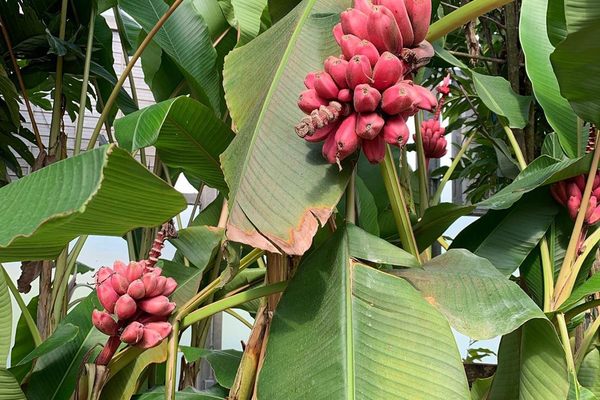
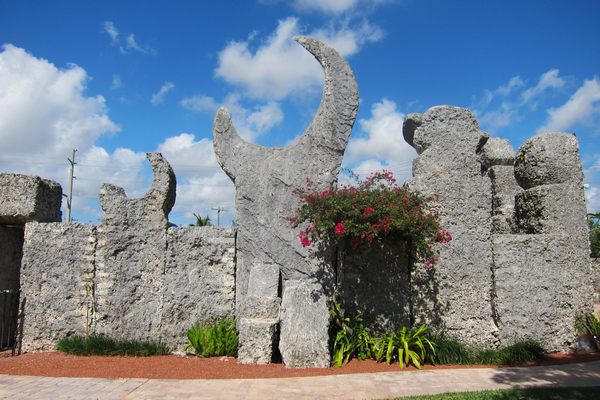


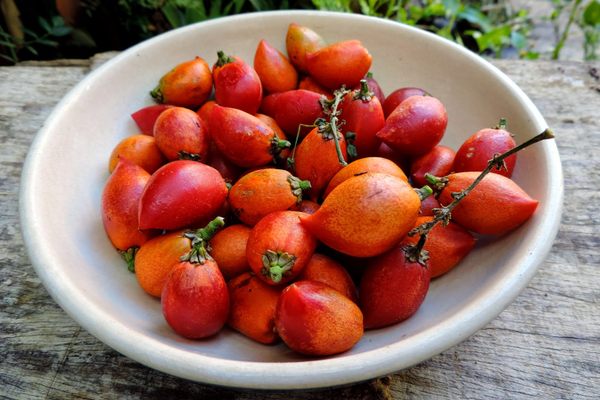
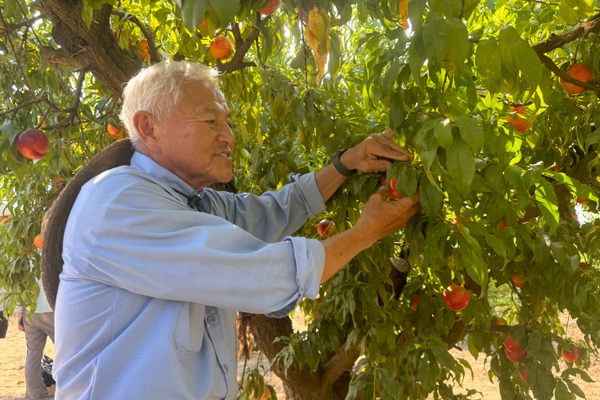


















Follow us on Twitter to get the latest on the world's hidden wonders.
Like us on Facebook to get the latest on the world's hidden wonders.
Follow us on Twitter Like us on Facebook